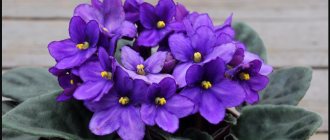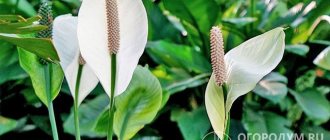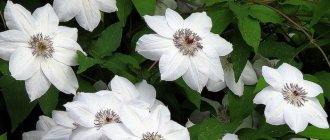Don't know how to care for roses in the garden in summer to prolong their flowering throughout the season? Believe me, there is nothing complicated about this. Processing roses in summer comes down to a few simple but necessary tasks that should not be forgotten.
Watering, pruning, fertilizing, mulching and cuttings - how to avoid getting overwhelmed in the summer bustle and missing something important. In case caring for roses in the summer is not your thing, we have compiled a detailed cheat sheet, after studying which you will definitely become, if not a guru, then a completely passable rose grower.
Rule 1: Trimming
The main pruning of the bush is carried out in the spring, after the winter shelter is removed from it. In summer, they do not rejuvenating, but formative pruning. In this case, withered and damaged stems are removed, and summer fungal diseases are also prevented. Here the branches are shortened. They can be pruned thoroughly, as young shoots quickly grow in size. In addition, branches with fruit ovaries should be removed from the bush. They draw the juices that nourish the flower onto themselves.
Pruning roses
Advice: at the time of pruning, only young branches should not be touched. It is on them that new rose buds are subsequently tied.
It is important to remember that summer pruning gives the rose bush a special decorative appearance. That is, the shrub more actively awakens dormant buds from such treatment. As a result, new shoots and buds are formed. This means that if you care for roses in the garden in the summer in this way, then the bushes will bloom profusely.
Caring for garden roses in the open ground
Blooming roses - decoration of the site
Most varieties of roses feel great in open ground, and some can even winter without shelter. Depending on the variety, it is necessary to choose the right place to plant the flower and provide it with proper care in the future.
Care measures include several points:
- Watering.
- Mulching.
- Loosening.
- Weeding.
- Spraying.
- Feeding.
Each of these points is important and the requirements that apply to roses should be strictly followed.
For reference! All varieties are light-loving - this rule should be taken into account when choosing a place for planting. In the shade they stretch out and bloom poorly, and sometimes there are no buds at all.
Regarding the soil, roses grow successfully on chernozems, light loams and sandy loams with good structure and a high content of organic matter. If the soil on the site does not meet these requirements, then it must be improved. For heavy soil, it is important to add sand and humus during autumn digging.
Rule 2: thorough weeding + mulching
All weeds should be removed regularly between rose bushes. If you ignore this rule, the grass will clog the root system of the bush. And the garden plot with roses itself looks untidy in this form.
After weeding, the root zone of the rose is covered with mulch. In this case, you can use mowed grass. It’s just important to make sure it doesn’t have seeds. Otherwise, the weed will sprout with renewed vigor. If you care for roses in this way in the summer, then the bush will bloom wildly.
Advice from experienced gardeners
Before planting a rose cutting in indoor or outdoor ground, it is recommended to prepare the soil. It should be light and fluffy, with neutral or low acidity.
Attention! You cannot place a rose garden in areas that are located near swamps or groundwater: in such places the flower often gets sick. This is especially true for gardens in the Leningrad region, the Urals, Siberia and the middle zone.
It is not recommended to feed the rose more than once every 2 weeks. An excess of microelements is just as dangerous as a deficiency. Experienced gardeners advise recording when and how much fertilizer was applied. This will help avoid mistakes in care.
To understand the condition of the rose, it is regularly inspected. For example, the presence of black spots indicates that the plant lacks potassium and magnesium, and the falling of petals indicates an excess of water. In this case, the soil is loosened and sprinkled with sand.
Rule 3: watering
Rose needs abundant and regular moisture. Therefore, you need to water the bushes as the soil dries out. To do this, use water slightly warmed in the sun. When watering, it is important to avoid getting water on the leaves or flowers.
The total volume of water per bush is calculated according to its age. Because the root system of the rose goes deeper into the ground every year. The older the rose, the more water it needs.
Watering
For heavy loamy soils, you can water roses less frequently. Because moisture stays in them longer. Light sandy loam soils require more frequent watering of the rose. During the rainy season, there is no need to moisten the flower.
Advice: the main thing is to monitor the soil of the bush and not allow it to dry out completely.
Protection from diseases and pests
Roses suffer from pest attacks quite often, so their cultivation is unthinkable without regular preventive treatment. The most common rose pests include:
- aphid;
- litsovertka;
- spider mite;
- rose sawfly;
- bronze;
- weevil.
Anemones - growing and care in open ground
An important role in the fight against these pests is played by the spring treatment of plants with insecticides. This procedure is carried out after removing the cover and pruning, most often at the end of March. For spraying, use a 1% solution of copper sulfate or a special ready-made preparation intended specifically for treating roses.
After the plants begin to grow and before budding begins, if necessary, this treatment can be repeated.
Attention! It is not recommended to treat plants during flowering, but in case of severe damage, it is still worth spraying the bushes. Perhaps the drug will harm the flowers, but the bush itself can be saved.
Rule 4: nutritional supplements
A flowering rose bush is in dire need of potassium-phosphorus feeding. To do this, you can buy ready-made preparations or use natural ingredients. If you take ready-made mixtures, then they are diluted with water according to the instructions. The bushes are watered with the solution according to the indicated scheme. Banana peels or chicken manure can be used as natural potassium fertilizers. They are laid around the root zone of the rose in a not too thick layer. Feed the rose with potassium-phosphorus mixtures until the end of August with an interval of 2-3 weeks.
Advice: stop feeding the bushes with nitrogen around July.
Interesting: Planting roses in summer
Fertilizer for roses in summer
To set buds and prolong the flowering period, roses need phosphorus and potassium. Magnesium, which affects color, iron, as protection against chlorosis, manganese and boron also have a positive effect on the appearance of prickly beauties. But nitrogen should only be added to the soil in the spring, because it delays the flowering process, promotes foliage growth and weakens the bushes in the face of disease.
Fertilizers can be applied in liquid or dry form. Whatever method you choose, first pour plenty of soil around the bush and fertilize not the center of the rose, but the soil at a distance of 10-15 cm from the stems.
Throughout the summer (once a month), roses can be fed with a solution of 10 g of superphosphate and potassium sulfate per 10 liters of water. In July, 500 g of chicken manure and 10 g of nitrophoska, as well as 2 cups of ash, are added to the solution.
Feeding roses after flowering is important for the next season. To prevent the bush from weakening from bearing lush inflorescences, in the fall add a mixture of 16 g of potassium monophosphate and 15 g of superphosphate dissolved in 10 liters of water under it. It is worth watering the bushes at the rate of 2 liters of fertilizer per adult bush and 1 liter per bush in the first year of life.
You can also foliar feed roses during flowering. For this, use specialized preparations, for example, Buton Plus, diluting 1 sachet of the product in 2 liters of water.
Rule 5: spraying
Therapeutic spraying of a flower in the country or in the garden is carried out if signs of fungal diseases or pests are found on the bush. If there is powdery coating, brown or yellowish spots on the leaves, you need to treat the plants with an antifungal compound. You must act according to the instructions. Spraying is carried out in the evening in the complete absence of wind.
If you really don’t want to use store-bought preparations, then you can use decoctions of garlic, horseradish, horsetail, hot pepper, nettle or wormwood for spraying. These same solutions are not only therapeutic, but also prophylactic. That is, it prevents the appearance of sores on the rose.
Mulching roses in summer
Ideally, it is advisable to mulch roses immediately after planting, and in the fall, renew the mulch layer to get rid of weeds, pests and fungal spores that have gotten into it. However, if for some reason you did not do this in the spring, mulch the roses during flowering.
Mulch for roses can be very diverse and even increase the decorativeness of the flower bed. In addition, under a layer of 7-10 cm, the soil will not cake, moisture will be retained longer, and nutrients from the gradually rotting mulch will be evenly supplied to the roots.
If you don’t know what to mulch roses with, try straw, peat, humus, and pine cones. In extreme cases, cardboard and unpainted paper will do, but such a flowerbed will not look very presentable.
Rule 6: Pest Control
As a rule, the queen of flowers is more often affected by aphids. If you notice whitish larvae on the leaves, you can carefully wash them off with water, remove them with your hands, or use a soap solution to treat the plant. They spray the bush from all sides. If the aphids are not removed, the buds may not bloom.
Caterpillars, larvae and aphids can also be removed using a decoction of hot pepper. It is prepared from 1 liter of water and five to six peppercorns. The solution is infused for a day, then filtered and the bush is sprayed against pests.
Another good insect repellent is a three percent solution of hydrogen peroxide. They are used to treat roses in dry and windless weather. Spraying is carried out once a week as needed. This mixture can be used all summer.
Wood ash is used as another natural fungicide and pesticide. It is also a potassium fertilizer. You can powder the plant with wood ash after each spraying.
Insect pests
Tip: you can also use sulfur and copper fungicides. They cope with scab, spider mites, powdery mildew and other ailments. Sulfur is especially successful in this.
Interesting: How to rid your garden of ticks
Shelter for the winter
This point is worth considering in a little more detail. The safety of plants depends on the quality of the shelter, but it is equally important to remove it in time and carry out a number of measures that are relevant at this time.
Peonies planting and care in open ground at the dacha
Roses are heat-loving plants. They are prepared in advance for overwintering, namely:
- create conditions for shoots to ripen;
- stop fertilizing with nitrogen in the second half of summer;
- reduce the frequency of watering.
In this way, the plants gradually move into a calmer phase and prepare for winter. In October, before covering, unripe shoots and flowers should be cut off, then before frost sets in, the bushes should be hilled to a height of 10-12 cm.
With the onset of stable frosts, climbing roses are removed from their supports and laid on the ground, and standard roses are bent to the ground and pinned. Leaves, spruce branches, and peat can be used as shelter. For additional insulation, a structure is constructed from non-woven material.
Attention! A layer of dry grass or leaves should be placed on the ground under the lashes to prevent contact with wet ground. This will prevent the shoots from rotting when the snow melts in the spring.
Roses should be provided with shelter for the winter.
In early spring, as soon as the snow melts, the plants are freed from shelter. You should not open the roses completely right away - a sudden opening can harm them. As it warms up, it is necessary to gradually remove the insulation, layer by layer. After the plantings are completely cleared, pruning is carried out, during which all damaged and diseased shoots are removed.
Reproduction of climbing roses by layering
You can propagate a rose by layering, and it is very easy to do. To do this, you need to select the healthiest and strongest shoots. A ditch is dug near the bush and the soil at the bottom is loosened. Pour a layer of humus on top and lay the selected shoot vertically. Next, the ditch is filled with earth and watered abundantly. Already in the spring, this shoot, having taken root, will become an independent plant. To improve rooting and survival rate, you need to prevent it from blooming this summer by tearing off the emerging buds.











